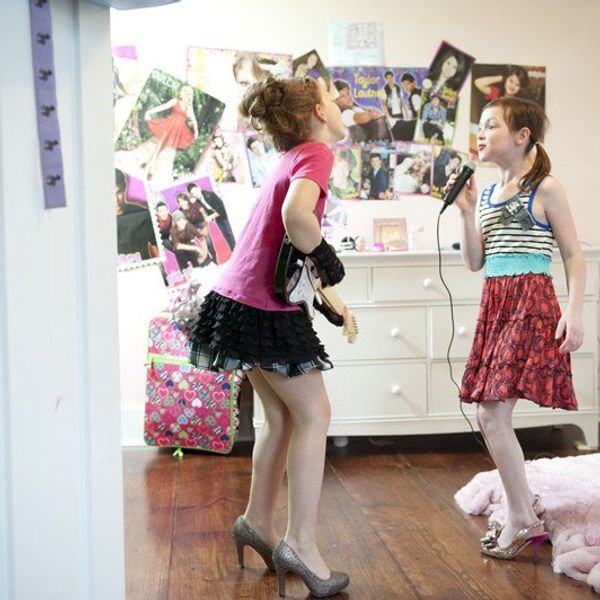It is always surprising to me that the words ‘slut’, ‘hoe’, and ‘whore’ are thrown around so casually and regularly in conversation. Many conversations where girls are slut-shamed because of something they have done or how many people they have hooked up with are looked upon as taboo, but when it comes to what a girl is wearing, conversation is commonplace. Conversation about what girls are wearing is encouraged by schools with their strict dress codes that are often sexist, specifically targeting girls as the subject of their rules. For example, many school dress codes include regulation on skirt or short length, width of straps, and exposing of cleavage. Also, many schools strictly enforce what a girl is wearing, but overlook any violation by boys.
There are hundreds of stories of girls standing up against their school dress codes and exposing the sexism so present in school policy, one of most popular being Carey Burgess, the school President from South Carolina who was sent home for wearing a shirt that was too short. Carey is not the only girl being sent home for her outfit choices- girls are also being forced to wear shame suits or are being sent to detention for what they are wearing often with the justification that their outfits are “too distracting” for male students and even male teachers. It is not surprising that in a “boys will be boys” society, girls are the culprits for distracting their male peers, not the boys themselves. The fact that school administrators and teachers promote this idea proves the idea that dress codes are sexist and specifically target girls.
In a society where girls are policed for everything from career choices to body weight, it is not surprising that girls are policed for what they are wearing as well. Girl’s bodies are viewed as “off limits” and “overly sexualized”, especially girls of color and bigger girls. This is where the true issue of dress code lies- that it isn’t about what girls are wearing, it is about their bodies. Schools are teaching girls at such a young age that their bodies are off-limits and that they’re dangerous to a boy’s well-being and education. Schools are thereby teaching young adults that girls are responsible for the actions of boys and that girls are to blame if something happens to them. This is why dress code perpetuates rape culture and victim blaming- it encourages blaming girls for what happens to them based on what they are wearing.
Because of dress codes, girls see themselves as objects who should not attract attention from boys. Also, girls who get in trouble are suddenly bad and dangerous and don’t deserve the respect of boys; not only does this shape the way boys see these girls, but also how these girls see themselves: as objects who don’t deserve respect from boys if they dress a certain way. Girls are also looked upon has having less respect for themselves the less they wear, which often leads boys, and even other girls, to view them as lesser. It is this culture of girls being “sluts” if they show a certain amount of skin that is imprinted into student’s heads that often leads them to slut shame someone based on what they are wearing. Although much of the blame for slut-shaming is placed on boys and the way they judge girls based on what they are doing or wearing, in fact, there is an aspect of girls policing other girls that is sometimes left out of the dialogue about slut-shaming.
As stated in Rebecca Raby’s thesis, “Tank Tops Are Okay, But I Don’t Want to See Her Thong” where she interviewed various girls on the issue of dress code, “These comments were frequently set starkly against concomitant hostility against other girls’ revealing dress and a consequent appreciation of dress codes”. This shows how girls sometimes agree with dress code regulation, considering clothing like spaghetti straps “slutty”. Some of the girls in her study group felt that certain clothing was “sleazy” even though they agreed a girl should be allowed to wear that clothing if she wanted to. This shows how schools’ dress codes often give girls standards or “reference points” by which to judge other girls clothing choices.
It’s hard to see what we can do in a society so immersed in dress code to change this. Schools are teaching kids at a young age to judge girls based on their clothing and that their clothing is directly correlated to their worth, so how is it possible that we can get around that when it is so embedded in our culture? In a society where 1 in 4 women will be raped in college, it is crucial that schools take measures to avoid perpetuating rape culture and foster an environment where girls are not sexualized and where “boys will be boys” is not a valid excuse. Convincing schools to change policy is rarely a viable option, but girls who are exposing these instances on social media are the ones taking the right steps to expose the injustices of school dress code. Hashtags like #IAmMoreThanADistraction are bringing problems to the general public and allowing girls who are actively facing these injustices to take a stand. This is one of the first steps we can take to end the sexism of dress code along with being aware that these rules may be changing the way we view other girls and taking active steps to avoid perpetuating this slut-shaming. Once this happens, maybe ‘slut’ will stop being a major part of our vocabulary and we will start standing up for girls who are being slut shamed instead of participating, and even encouraging, the conversation.













 Photo by
Photo by  Photo by
Photo by  Photo by
Photo by 










